UTV manufacturers love to shout “all-new” the same way gas station sushi shouts “fresh.” Most of the time, it’s a reach. A new hood shape and a tweaked badge do not equal a redesign.
Can-Am didn’t play that game. The 2026 Defender lineup actually changed. This isn’t lipstick on a bumper. The brand rebuilt the platform from the ground up. Powertrain, suspension, cab comfort, electronics, and accessories all got attention in a major way.
What came out the other side is smarter, quieter, and shockingly refined. It still works hard, it just does it without rattling your spine or locking you in a touchscreen maze. This is what happens when a brand listens to riders. It’s clean, functional, and feels like it was designed by people who know dirt and hard work.
I had the chance to take all of the new models out into the dust, crawling up rocks, across creeks, and ripping through the woods. I went in with the same low expectations of what “all new” means, and left feeling overwhelmed with actual rad upgrades.
Admittedly, I’m less impressed by specs than I am by real-world use. Can I put my dogs in it, drag a downed tree, haul grain, and move firewood? If yes, I’m not terribly difficult to impress. However, I was beyond blown away by this machine.
In short: I’m admittedly a long-time fan of the Defender, but these new builds have me seriously considering having an uncomfortable chat with my lender. Can-Am took one of the best rigs out there and overhauled it, making it far more badass than I ever would have imagined.
2026 Can-Am Defender Lineup Review
First Ride Impressions
I tested the new Defender lineup with the Can-Am team in rural Connecticut, and it certainly wasn’t a parking lot demo. We hit tight woods, rocky climbs, dusty straightaways, and even a working mine.
The suspension soaked up roots and rocks with shocking ease. The chassis stayed planted, even at decent speed. The enclosed cabs ran incredibly quietly. I could talk with a passenger without yelling, listen to my music without having to blare it, and actually hear my own thoughts, which seems rare in this category.
The heat was brutal. Humidity hovered near 90%. The cab stayed cool and comfortable thanks to the updated HVAC system, which didn’t just move air around; it made it wildly comfortable.
The 10.25-inch touchscreen made everything easier. It connected to my phone fast and stayed connected. Navigation and media were easy to control. Comparing this experience to say, the notoriously despised Polaris Ride Command, was dreamy. The competitor’s comparable screen and system feels like trying to order takeout on a fax machine.
The Defender’s new setup worked exactly how it should, which was a breath of fresh (air-conditioned) air.
Talking With the Team
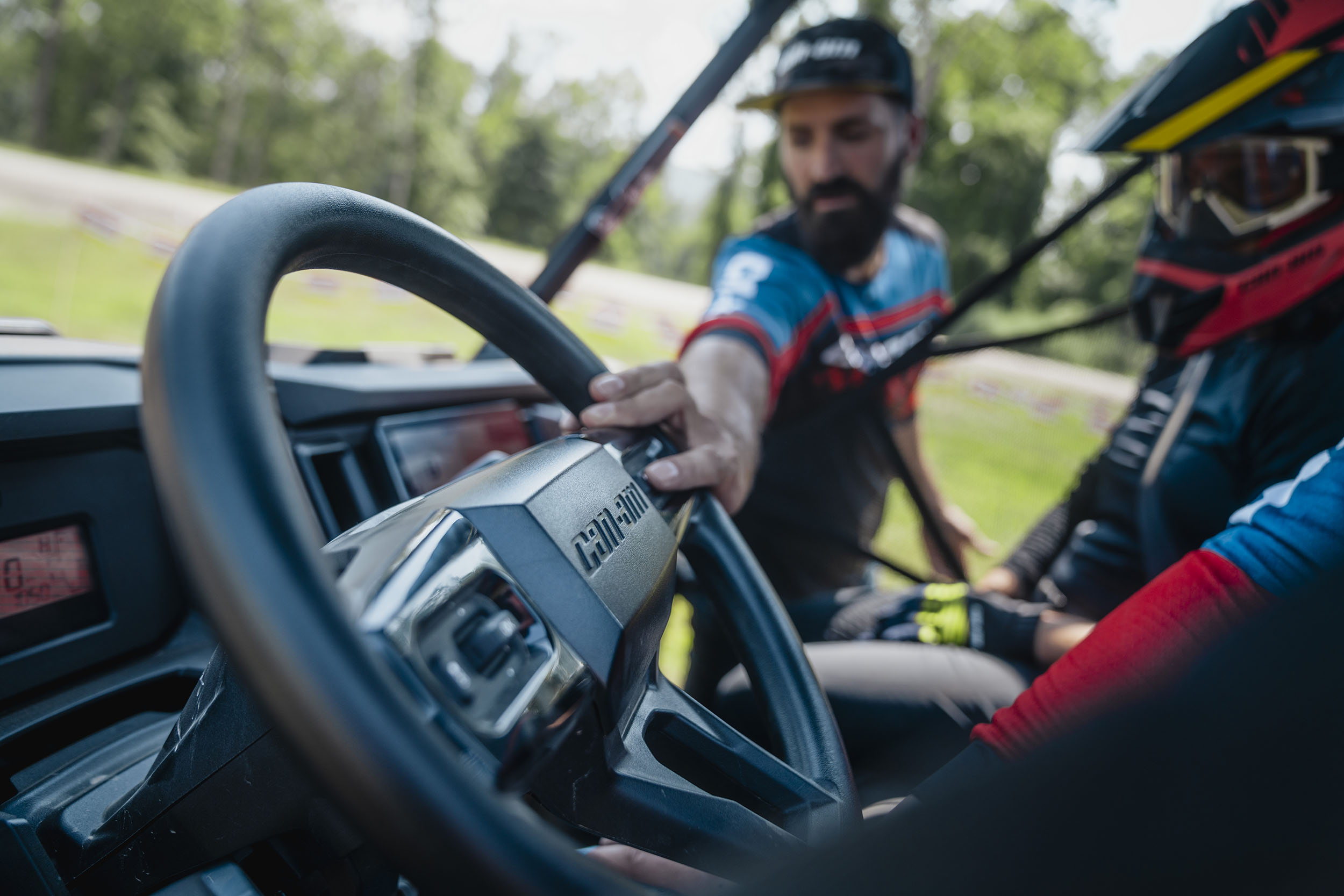

Between trail runs, I talked with the engineers and designers. They walked through each change. The redesigned driveline components and upgraded chassis weren’t just for show. The team focused on real durability, smart layout, and quiet operation.
Maintenance access now makes sense. Air filters, electrical connections, and service points sit where they should. You won’t need to remove half the machine just to clean a filter.
This wasn’t a polished demo. You can see the team is passionate about these machines, and they worked their tails off to make real, meaningful changes to the build. I think they really nailed it.
What’s New for 2026


Models & Trims
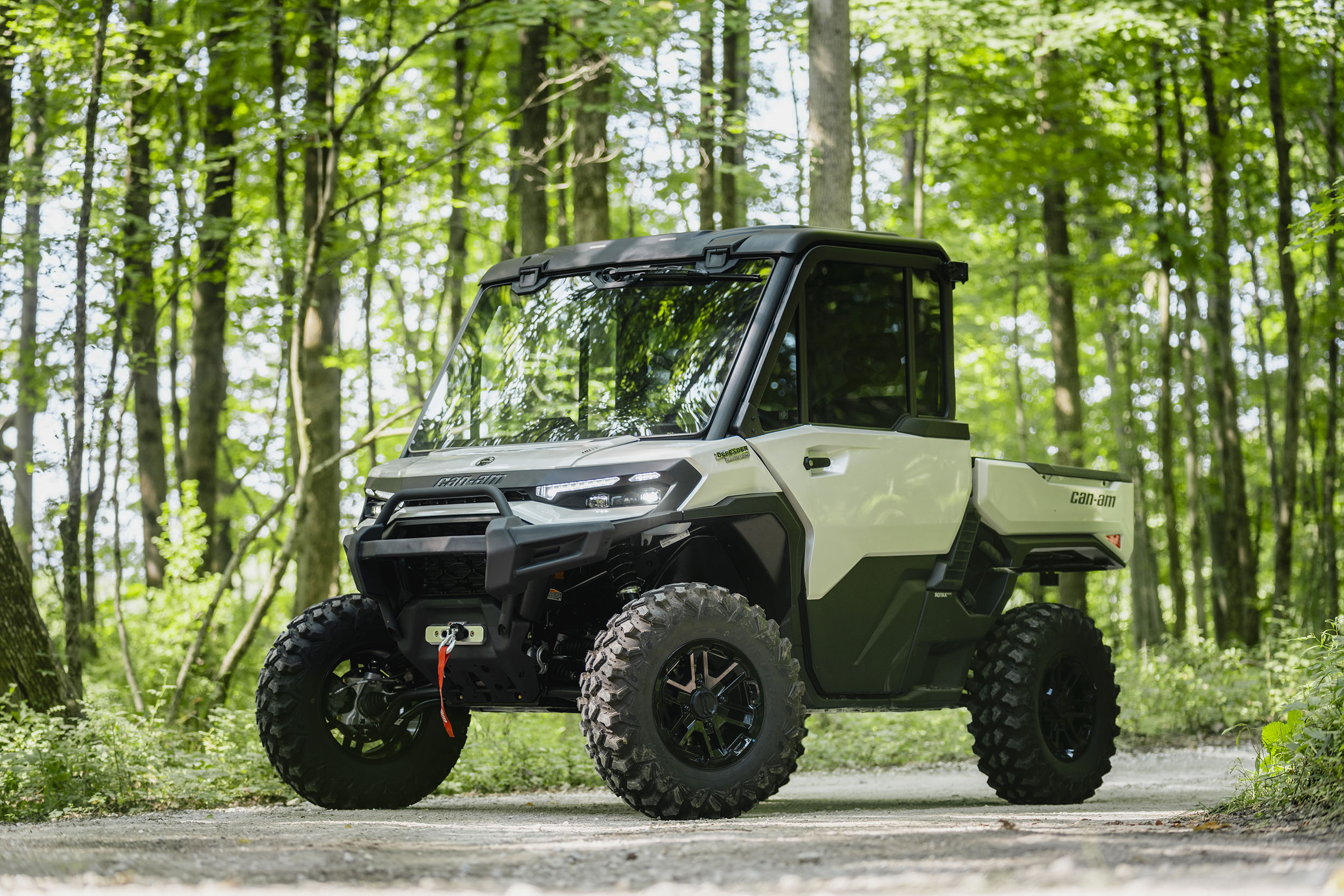

The HD11 (starting prices from $22,699 to $39,699) comes in XT, XT CAB, X MR, Limited, Lone Star, and Lone Star CAB trims. All are available in three-seat or MAX six-seat versions.
The HD7, HD9, and HD10 return, as do PRO and 6×6 models, though we didn’t spend any time with these machines in testing.
Platform-Wide Changes
The new Defender platform touches everything that matters. Power delivery is smoother. Comfort gets a huge boost. The accessory count exploded. With more than 200 options, over 100 of them new, this lineup is built to be customized without a headache.
Powertrain Upgrades


The 999cc HD11 inline triple makes 95 horsepower and 70 pound-feet of torque. It feels quick without being twitchy or jumpy.
A new CVT setup uses a pDrive primary and QRS-X secondary. That pairing smooths out low-speed crawling while keeping throttle response sharp. The ride has all the pep of a UTV with all the comfort of a truck.
Selectable drive modes — Work, Normal, and Sport — let you tune the feel on the fly. XT models get the Quick-4Lok front diff. Limited, Lone Star, and X modes come with Smart-Lok. Both systems lock up when you need them to.
Cooling, Intake, and Driveline
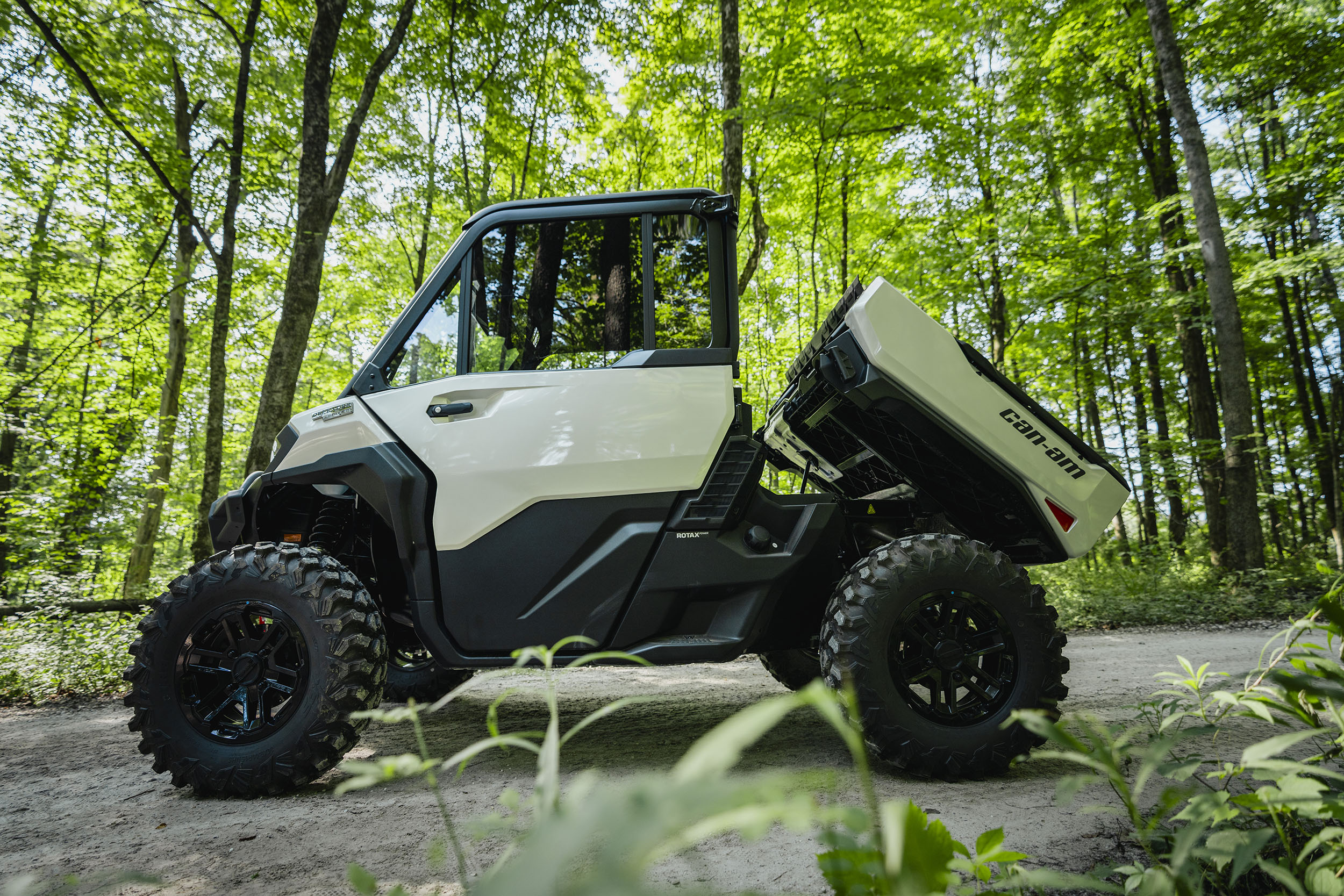

The new intake system breathes better and handles dust with ease, partially due to its new side location. The cooling system now uses a variable-speed fan to cut cabin noise, and it’s impressive. I stayed shockingly comfortable with a ton of moving air and very minimal fan racket.
Front half shafts and the prop shaft are 25% bigger, with a driveline fuse that grew to match. This drivetrain really does feel like it’s built to work. I’ve tested a lot of UTVs and’ve been impressed with their performance in this area, but most don’t quite feel like they match the grit of this setup.
Steering, DPS, and Speed Limiter
Tri-Mode Dynamic Power Steering now has improved calibration, which is just a fancy way of saying it’s incredibly responsive. Steering stays light when crawling and tightens up at speed.
The utility speed limiter allows 1 mph adjustments between 5 and 20 mph, which, if you need it, is pretty handy.
Chassis & Suspension
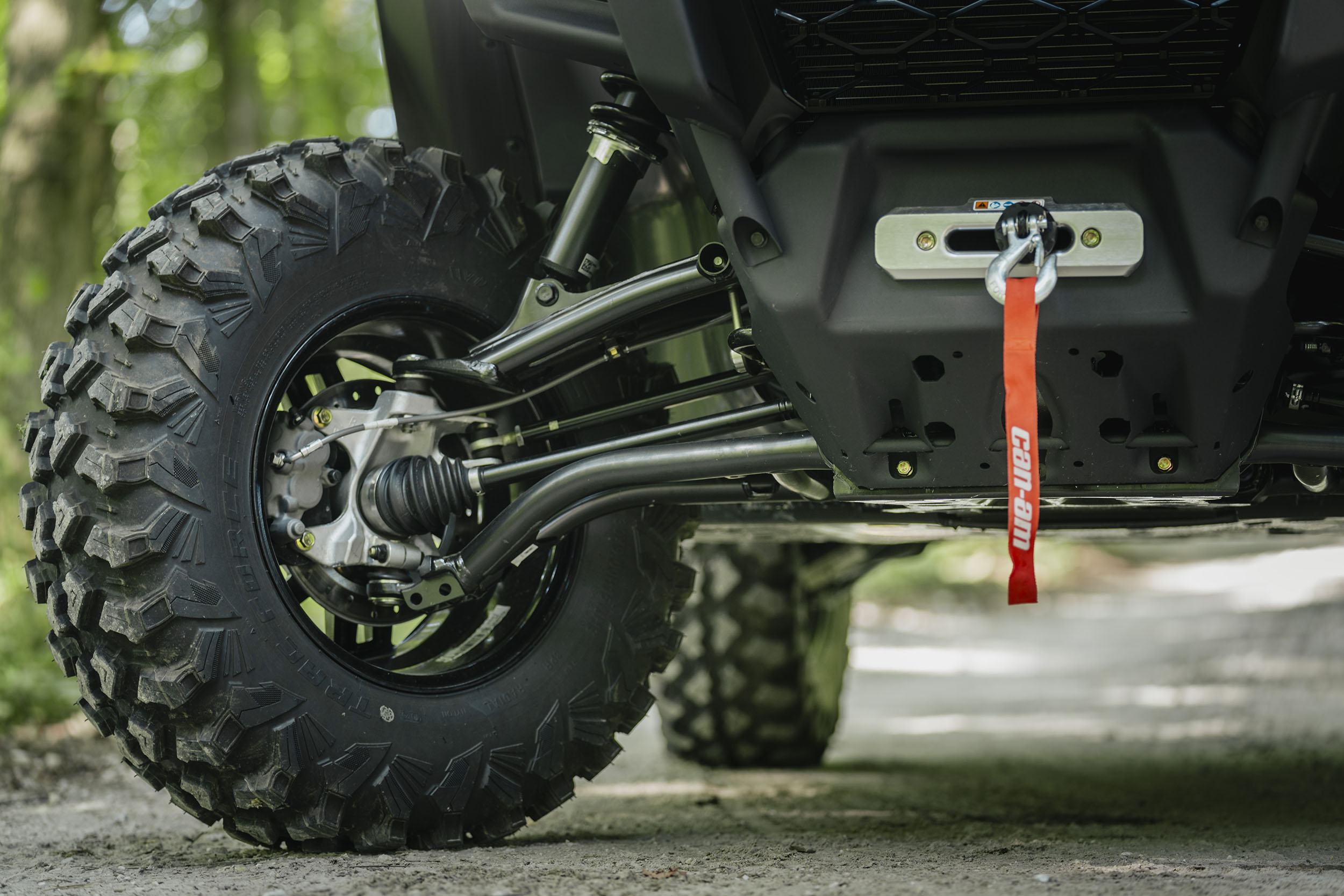

The new 65-inch stance gives the Defender a planted feel without going overboard, and 50% larger arched double-A arms help it float over terrain that would rattle lesser rigs. I hit some ground that I assumed would shake me out of my seat, but it was almost unsettling how smoothly it handled the rough stuff.
Can-Am added double-bonded bushings across the suspension to kill squeaks (which every UTV on the planet seems to have) and reduce maintenance. Suspension travel hits 12 inches at all four corners with a clean ground clearance of 15 inches.
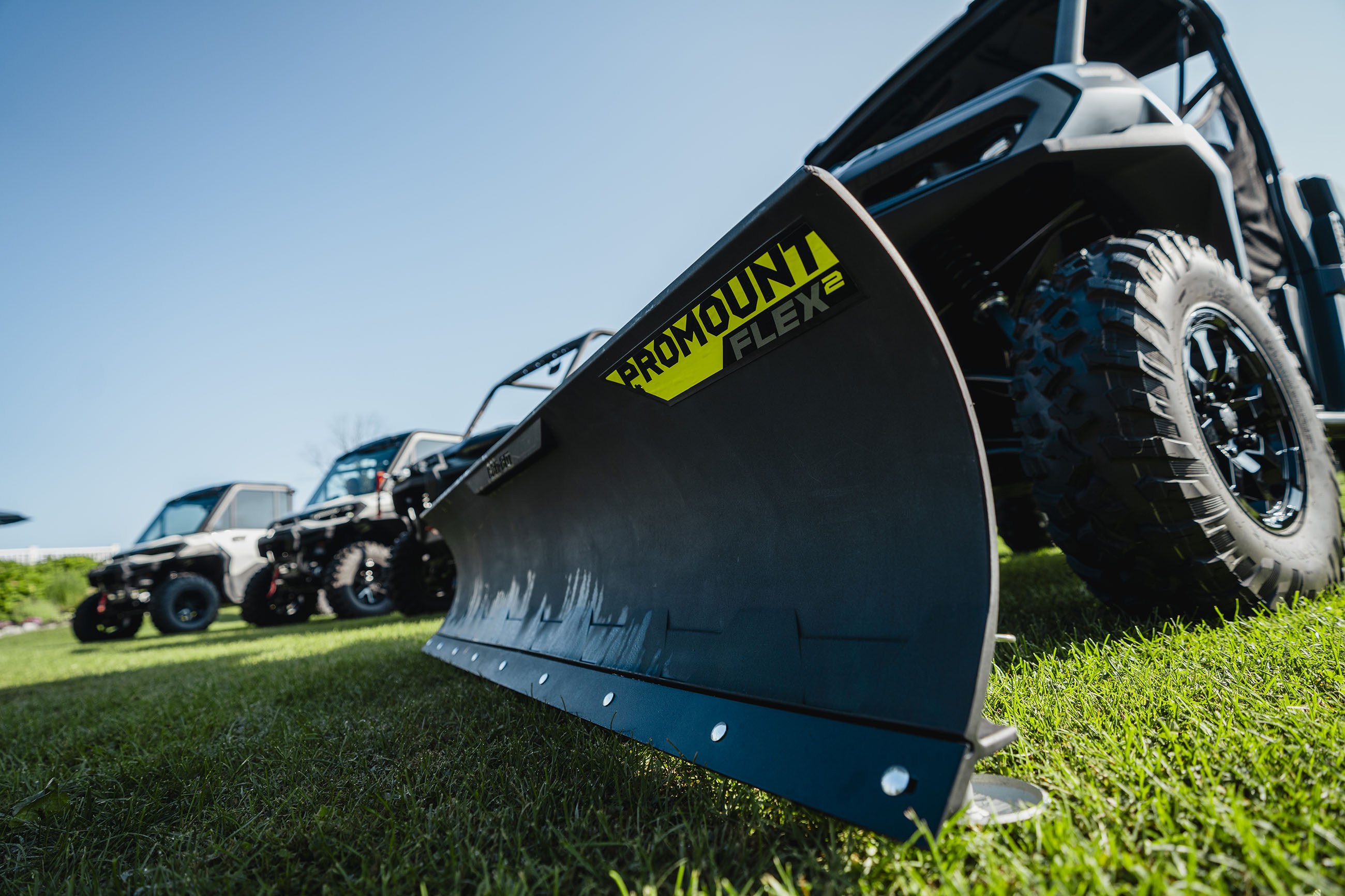

Speaking of clearance, not to get giddy as someone who deals with a lot of snow, but the new factory plow mounts and track kit connections are built in, and so slick to operate. Half of the reason my driveway is snow-covered is that I’m avoiding having to go mess with my cumbersome plow.
Brakes, Tires, and Wheels
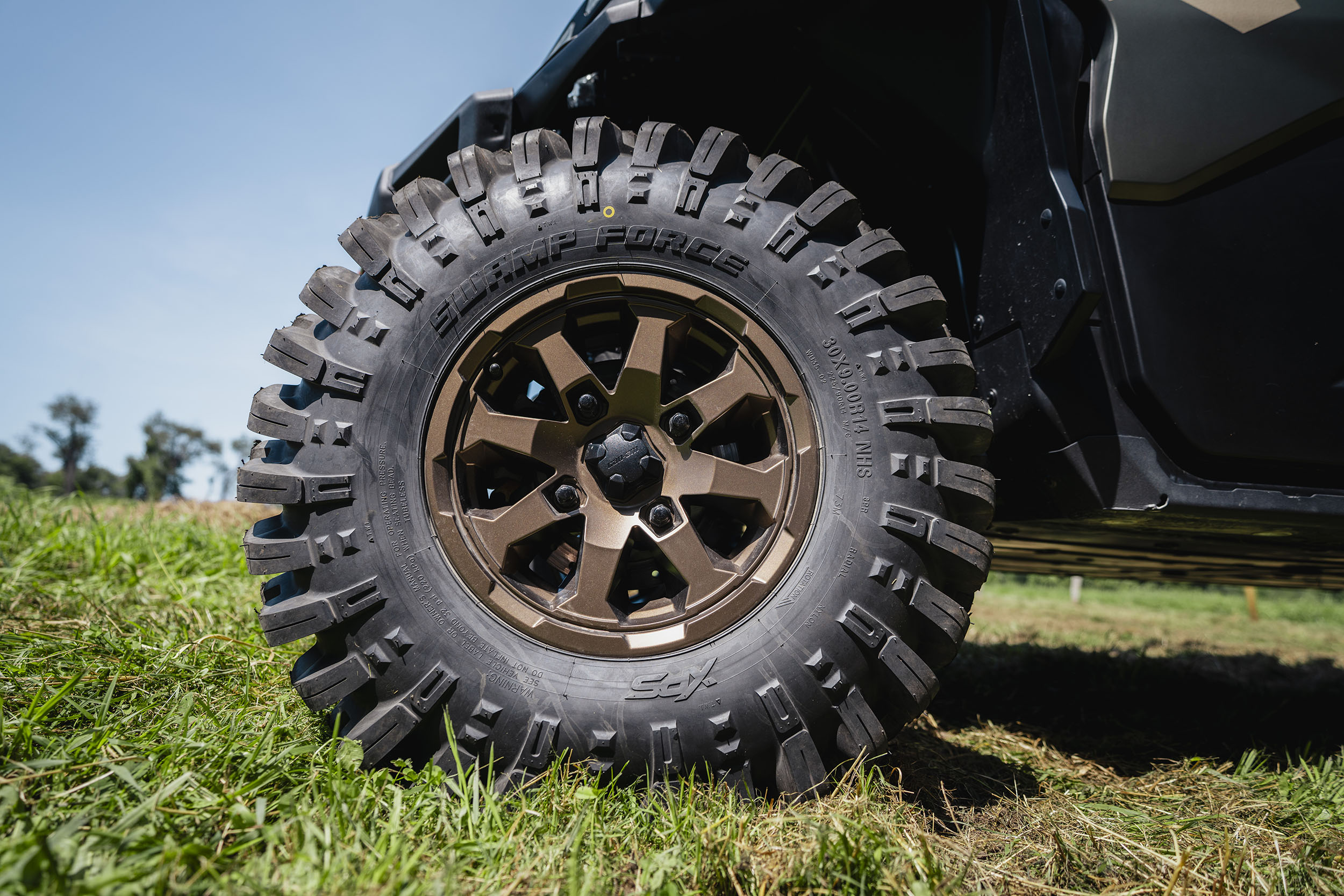

Its front brakes now use 262mm rotors with 32mm twin-piston calipers. Its rear brakes also grew in size to handle the new configurations.
Wheel and tire packages vary by trim. XT models come standard with 29-inch Trail King 2 tires, Limited and Lone Star roll on 30-inch Trac Force tires, and the X MR sports 30-inch Swamp Force tires.
Comfort, Tech, and Accessories
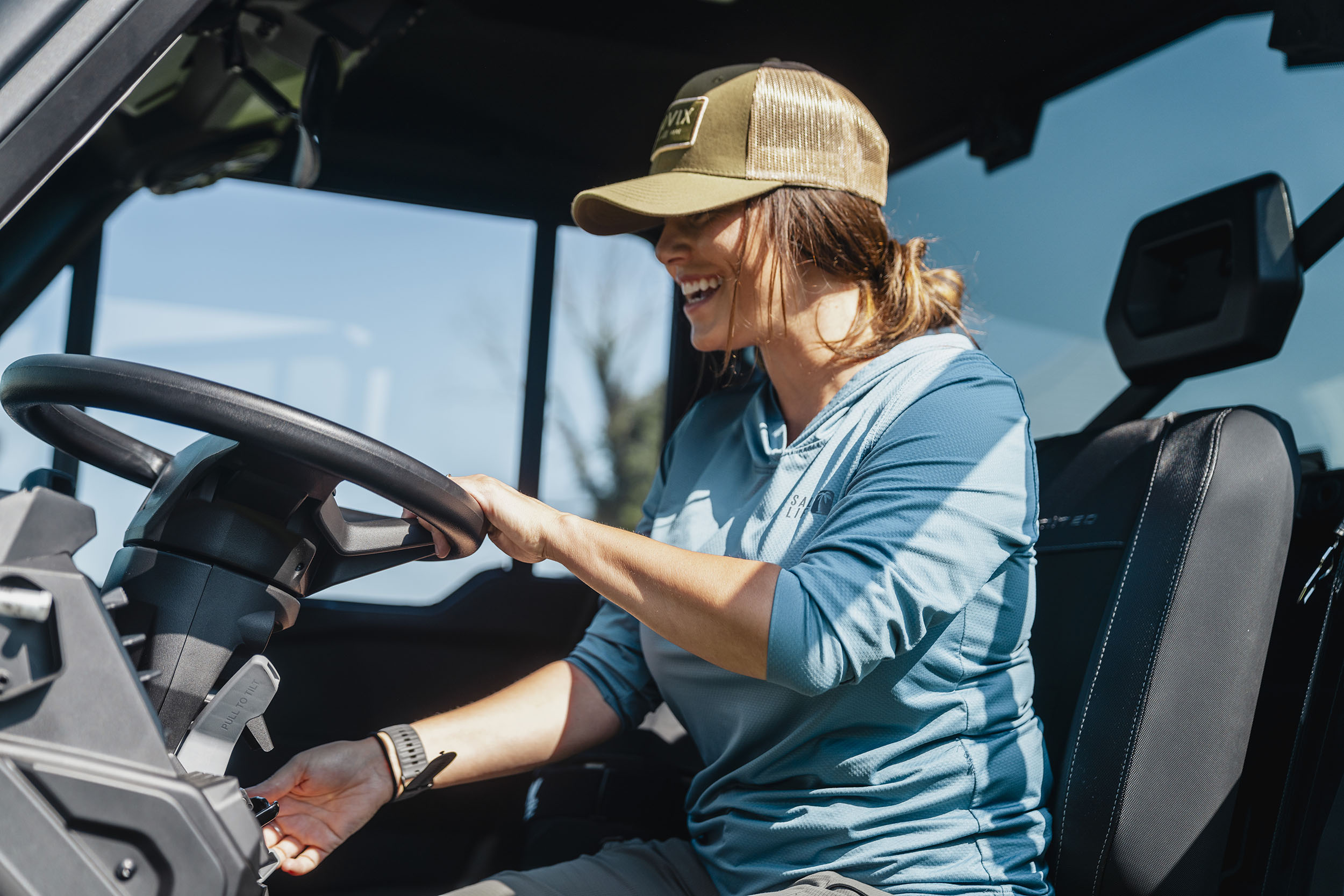

Quieter, Roomier Cab
The new cab is quiet-quiet. Intake, driveline, and exhaust changes shaved off measurable decibels. It’s something that might not seem important to a casual user, but if you’re in your UTV all the time, that constant sound gets draining. Being able to hear yourself think, hear a passenger without screaming, and hear your music without blowing your speakers is so nice.
Inside, there’s more legroom (which I admittedly don’t need), better seats, and larger door openings.
The steering wheel tilt locks in with a memory position and pops clean out of the way to get in and out, which is something I never even considered being a thing I’d like. I like it a lot. No more squeezing in if you’re (like me) short and have the seat adjusted as close as she gets, or have “blue-collar abs” that might stick out a bit and give the steering wheel a rub getting in and out.
The seats have a higher backrest angle, better foam, and solid shoulder support, which is something I don’t tend to notice on short-term tests, but these seats were immediately comfy.
HVAC Improvements
Cooling output jumped from 2.4 to 3.9 kW. Airflow more than doubled, defrost times dropped by at least 40% at idle, and a simple three-knob control setup gives you six fan speeds and five vent modes.
I am not someone who handles heat and humidity well, but in the Limited, I wasn’t just comfortable. I dang near got chilly after being outside and sweating. That’s a huge win.
Power & Electronics
HD11 CAB models now carry a 1,700W charging system, double the previous output. You can run tools, lights, and accessories without stressing the system, which is becoming more and more important in an increasingly digital/electric world.
Infotainment & Cameras
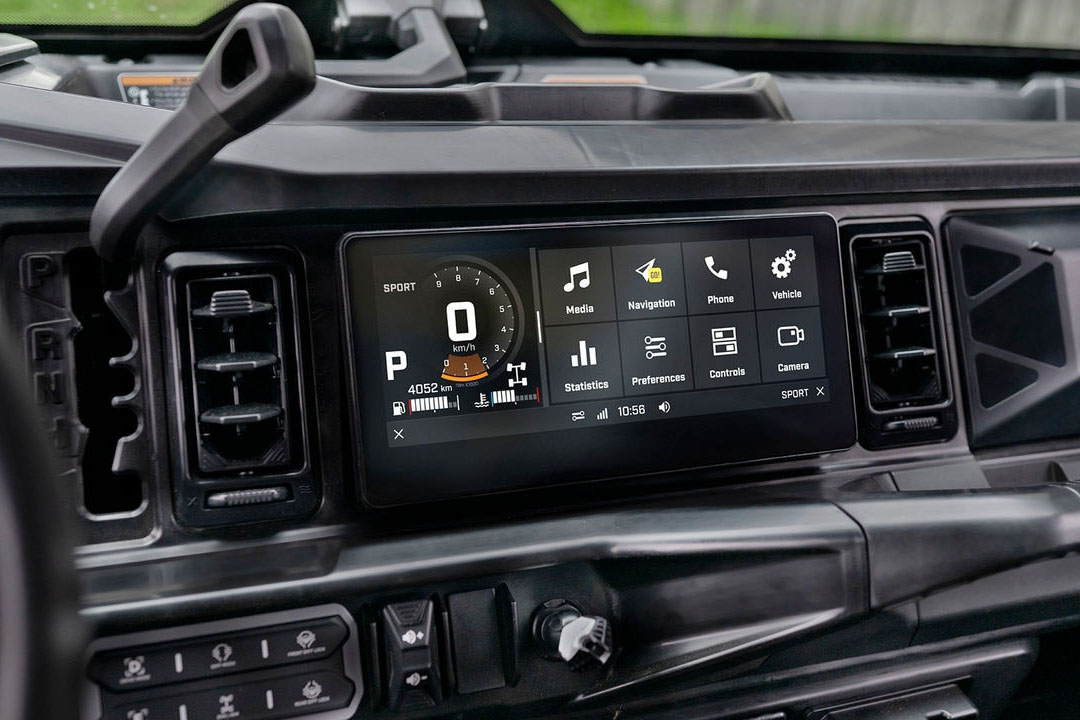

The 10.25-inch touchscreen pairs fast and stays connected. Built-in GPS and the BRP GO! app handle navigation, music, and comms. I know it sounds silly, but this might be the most exciting upgrade for me.
So many UTVs have some kind of “smart” screen configuration, and almost all of them are more frustrating to use than they’re worth. This is not the case here. I connected my phone via Bluetooth in about 5 seconds, and there was no other fiddling needed. It just works.
Along with being able to see your map and listen to your tunes, rear cameras come standard with front cameras on Lone Star.
Lighting & SMART Accessories
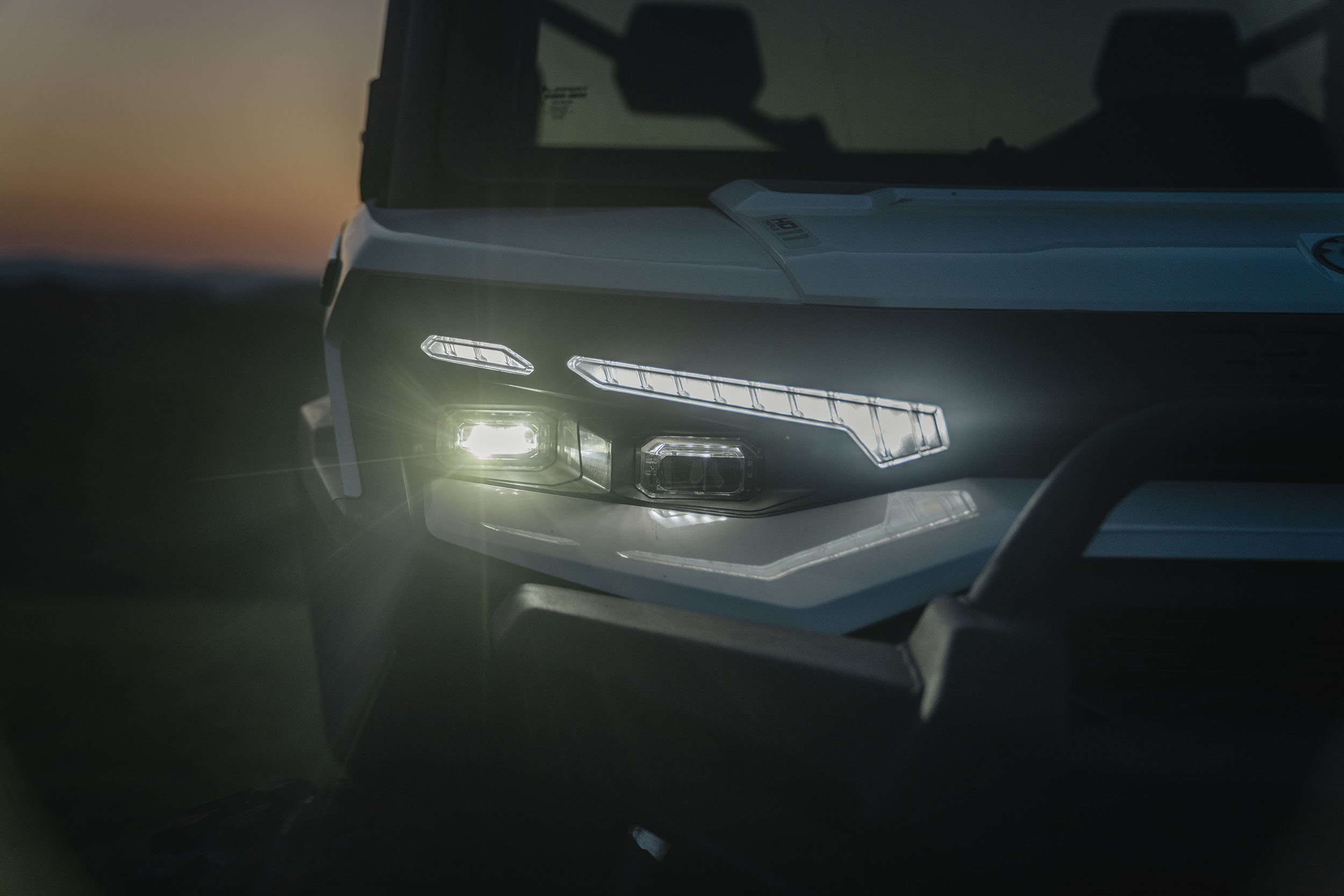

New LED headlights produce three times the output of the old setup, and new backup lights are standard. Accessory light bars go up to 40 inches with 32,000 lumens, and to say they get insanely bright is an understatement.
Five SMART accessories launch with the lineup, including three lights, a wiper, and a dome light, all connected to and controllable by the infotainment touchscreen system.
Cargo, LinQ, and Serviceability
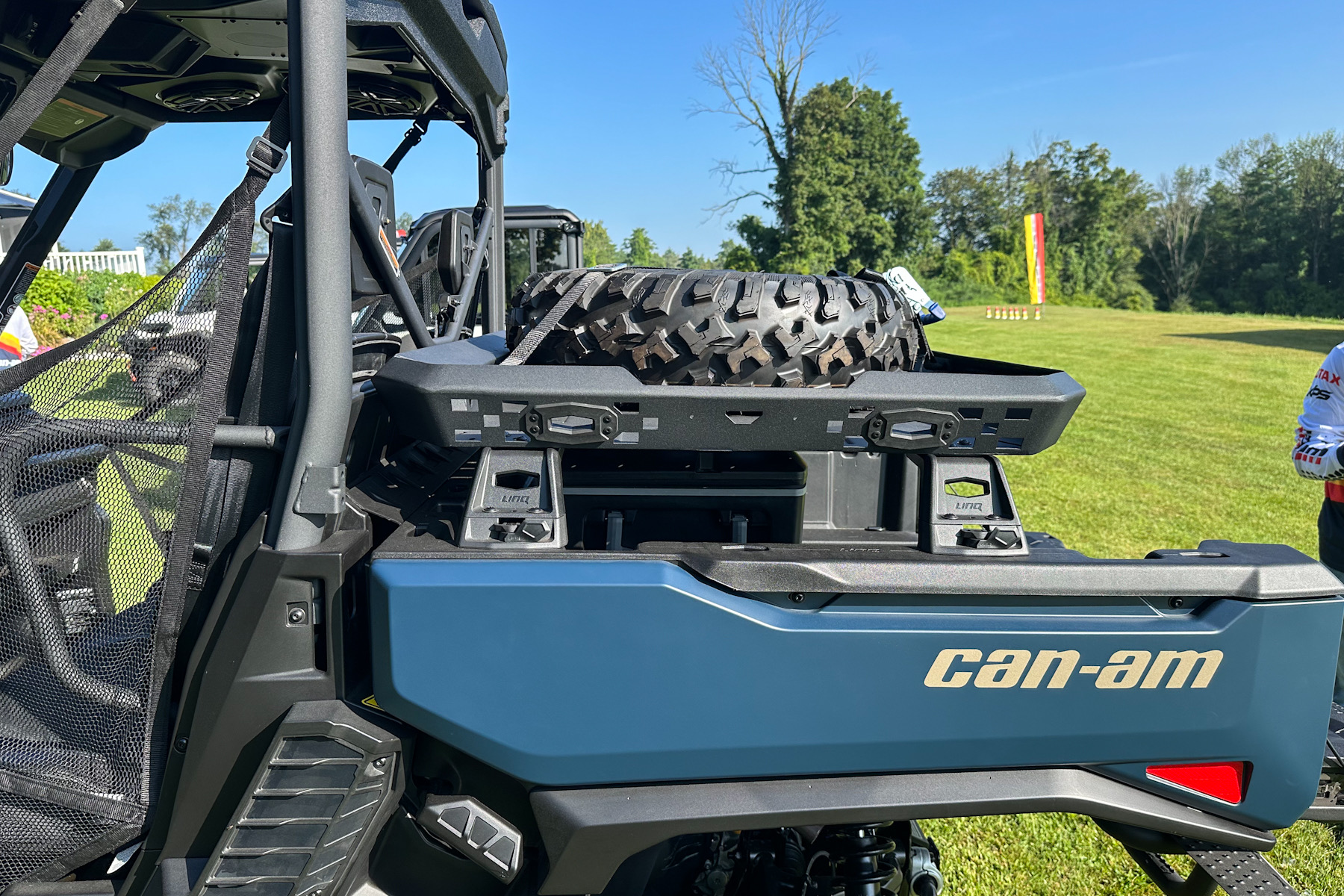

I am a sucker for accessories. LinQ integration now extends to the tailgate, bed walls, and dash, meaning more gadgets and add-ons can go more places. The cargo box now gets stronger tie-downs and a sturdier latch. I’m giddy about the Multi-Position Cargo Rack/platform option in the bed for my pups. We’ll see if the bank is just a giddy for me.
There’s even a dash-mounted LinQ Lite holder that locks tools or devices in place.
Up front, a removable grill and top dash panel give clean access to service points. The goal is not to have to do a ton of servicing, right? But when you need to get your maintenance chores done, it is super nice to have everything so easily accessible.
Skid Plates, Bumpers, and Winch
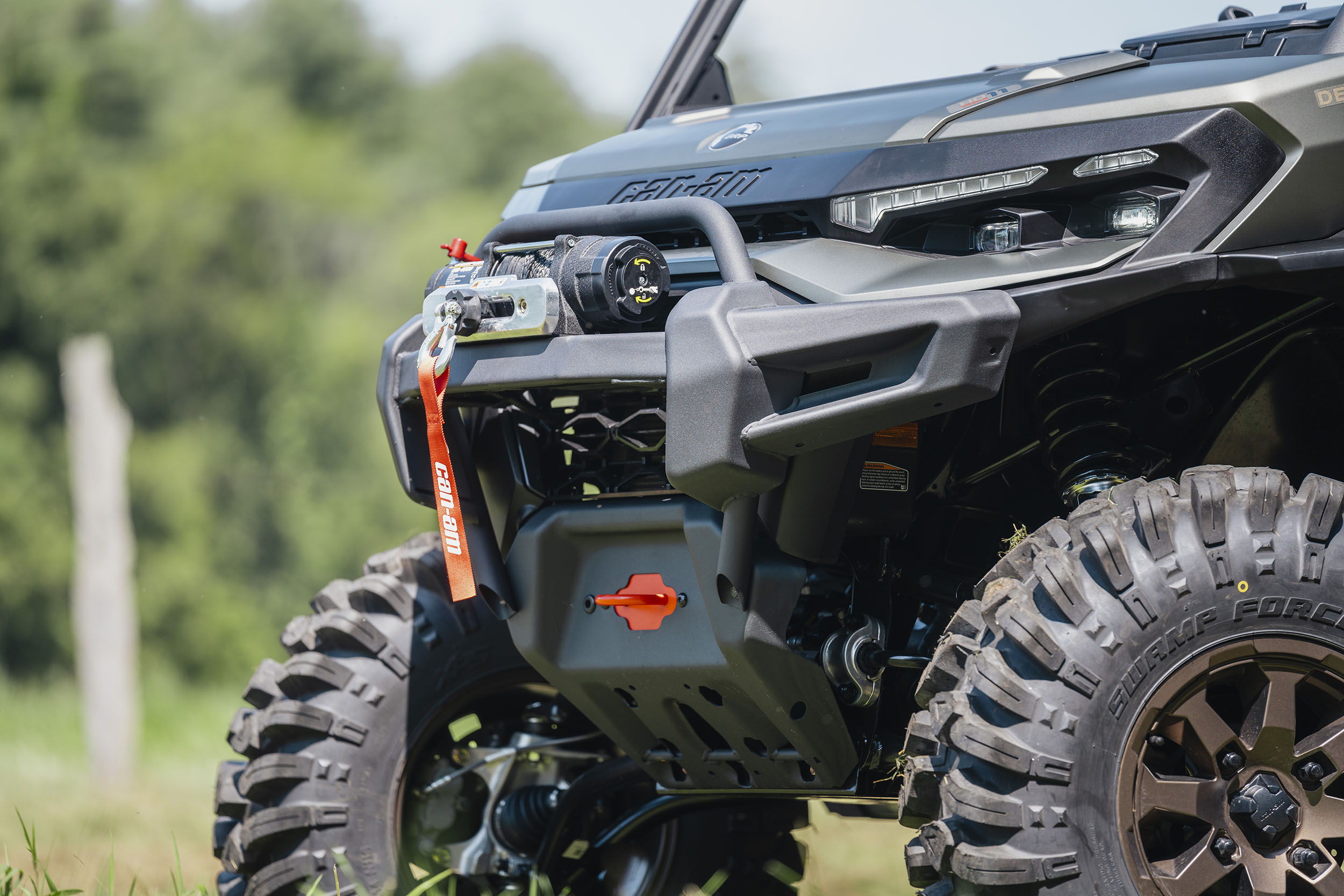

The skid plate is 11.5 mm thick with fewer attachment points, again to help with the ease of maintenance. Heavy-duty bumpers and a 4,500-pound winch with synthetic rope come on select trims. It almost seems silly not to have a winch on a UTV.
2026 Defender UTV Pricing
This is where I’m consistently impressed with Can-Am. A new trend in UTVs seems to be high-end upgrades with high-end price tags to match. The starting prices for the 2026 Can-Am Defender lineup range from $13,399 for the HD7 to $39,699 HD11 Defender Max Lonestar Cab Edition. Granted, you can add a heap of bells and whistles to drive those starting prices up, but you don’t have to. T
Even with all the massive upgrades, Can-Am didn’t make too huge a jump in price. It’s still a working machine for working people, and that is shockingly refreshing.
2026 Can-Am Defender: Final Take


After two dusty days behind the wheel, I can say this with confidence: I love this lineup. The upgrades aren’t fluff. They’re actually functional. The cabs are quiet, cool, and wildly comfortable. The powertrain feels sharp, the suspension rides like a dream, and the accessories hit that sweet spot between clever and genuinely useful.
I left Connecticut running the numbers on what a kidney goes for these days. If anyone’s in the market for slightly used organs, I’ve got a Defender-sized hole in my fleet to fill.
… and if Santa is listening, I’ve been so good this year.
Read the full article here




